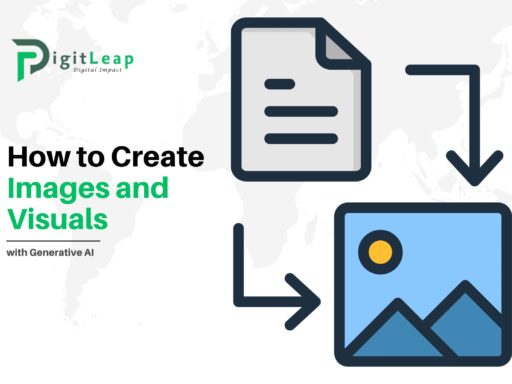Top 50 Angular Interview Questions and Answers for 2025: Your Ultimate Guide to Mastering Angular
Angular remains one of the most popular front-end frameworks for building dynamic web applications. As businesses increasingly adopt Angular for their digital solutions, candidates preparing for interviews need to be well-versed in its concepts and best practices. Whether you’re new to Angular or looking to deepen your expertise, here’s a human-friendly, 100% unique guide featuring 50 key Angular interview questions along with sample answers for 2025.

1. What is Angular and why is it popular?
Angular is a robust, open-source framework developed by Google for building dynamic web applications. It’s popular because of its component-based architecture, powerful data binding, and comprehensive tooling that streamline development and enhance scalability.
2. Can you explain the component-based architecture of Angular?
In Angular, applications are built using components—self-contained units that include HTML, CSS, and TypeScript. This modularity makes code reusable, easier to maintain, and promotes a clear separation of concerns.
3. What is TypeScript and how does Angular use it?
TypeScript is a superset of JavaScript that adds static typing and object-oriented features. Angular is built entirely with TypeScript, which helps catch errors early and improves code clarity and maintainability.
4. What are Angular modules?
Angular modules, defined by the @NgModule decorator, organize related components, directives, pipes, and services into cohesive blocks. They help manage application complexity and enable lazy loading for performance optimization.
5. What is data binding in Angular?
Data binding is a mechanism that synchronizes data between the model (component class) and the view (template). Angular supports one-way data binding and two-way data binding (using [(ngModel)]), ensuring that UI updates reflect model changes and vice versa.
6. How do Angular directives work?
Directives in Angular are classes that add behavior to elements in your templates. They come in three types: components (with templates), structural directives (like *ngIf and *ngFor that modify the DOM structure), and attribute directives (like ngStyle that change the appearance or behavior of an element).
7. What is Dependency Injection in Angular?
Dependency Injection (DI) is a design pattern where a class receives its dependencies from external sources rather than creating them. Angular’s DI framework provides components with the services they need, improving modularity and testing.
8. What are services in Angular?
Services are singleton objects that encapsulate business logic or data operations, such as fetching data from an API. They are provided to components via Angular’s DI system, ensuring that functionality is reusable across the application.
9. How do you create a service in Angular?
You can create a service using the Angular CLI command ng generate service service-name. The service is then decorated with @Injectable() and can be injected into components or other services.
10. What is Angular CLI and why is it useful?
Angular CLI is a command-line interface tool that streamlines the development process by automating project setup, code generation, testing, and deployment. It helps maintain consistent project structure and improves productivity.
11. What is routing in Angular?
Routing in Angular enables navigation between different views or components. Using the Angular Router, you define routes in a module and navigate between them, allowing for a single-page application experience.
12. How do you protect routes in Angular?
You can protect routes using route guards (CanActivate, CanDeactivate, etc.). These guards check conditions (like user authentication) before allowing access to specific routes.
13. What are Observables in Angular?
Observables are a key part of reactive programming in Angular, provided by RxJS. They handle asynchronous data streams and events, making it easier to manage data from HTTP requests or user interactions.
14. How does Angular handle asynchronous operations?
Angular uses Observables and Promises to manage asynchronous operations. Observables offer more robust handling with features like operators for transforming data and managing multiple events over time.
15. What is Angular’s change detection mechanism?
Angular’s change detection system monitors component state changes and updates the view accordingly. It uses a hierarchical structure and zone.js to detect asynchronous events and trigger the necessary UI updates.
16. What are Pipes in Angular?
Pipes are simple functions that transform data before it’s displayed in the template. Built-in pipes like DatePipe, CurrencyPipe, and UpperCasePipe are commonly used, and custom pipes can be created for specific needs.
17. How do you create a custom pipe in Angular?
To create a custom pipe, use the Angular CLI command ng generate pipe pipe-name. Define the transformation logic in the transform method within the pipe class and decorate it with @Pipe().
18. What is the purpose of the ngOnInit() lifecycle hook?
ngOnInit() is a lifecycle hook in Angular that is called once, after the first ngOnChanges(). It’s typically used for component initialization, such as fetching data or setting initial values.
19. What is Angular Universal?
Angular Universal allows for server-side rendering (SSR) of Angular applications. It improves initial load times and enhances SEO by rendering the app on the server before sending it to the client.
20. How do you implement lazy loading in Angular?
Lazy loading is implemented by configuring routes with the loadChildren property in the routing module. This technique loads modules only when needed, reducing the initial load time and improving performance.
21. What is a Reactive Form in Angular?
Reactive forms are a way to build forms in Angular using a model-driven approach. They offer more flexibility and control over form validation and state management compared to template-driven forms.
22. How do you perform form validation in Angular?
Form validation in Angular can be done using built-in validators (like Validators.required and Validators.email) in reactive forms, or using Angular’s directive-based validation in template-driven forms.
23. What is NgRx?
NgRx is a state management library for Angular, based on Redux principles. It helps manage complex state in large applications by providing a single source of truth and unidirectional data flow.
24. How do you manage state without NgRx?
Smaller applications can use Angular services or BehaviorSubject from RxJS to manage state without the full complexity of NgRx.
25. What are Angular animations?
Angular animations allow you to create smooth, complex animations using a declarative syntax. They integrate with Angular’s component lifecycle to provide seamless transitions and effects.
26. How do you optimize Angular applications for performance?
Performance optimization techniques include lazy loading modules, using the OnPush change detection strategy, optimizing template bindings, and minimizing bundle sizes through tree shaking and code splitting.
27. What is Ahead-of-Time (AOT) Compilation?
AOT compilation converts your Angular HTML and TypeScript code into efficient JavaScript during the build process. This leads to faster rendering in the browser and early detection of template errors.
28. How does Angular handle dependency injection?
Angular uses a hierarchical dependency injection system, where services are provided in modules and injected into components as needed. This promotes code reusability and easier testing.
29. What is the difference between a Service and a Factory in Angular?
In Angular, a service is a class with specific functionality, while a factory is a function that returns an object. Both are used to share data and logic, but services are more common due to their simplicity and integration with Angular’s DI system.
30. How do you debug an Angular application?
Debugging an Angular application involves using tools like Chrome DevTools, Angular CLI’s built-in debugging commands, and logging to the console. Additionally, Angular DevTools can help visualize component trees and change detection cycles.
31. What are decorators in Angular?
Decorators are functions that add metadata to classes, properties, or methods. They are used extensively in Angular to define components, directives, modules, and services.
32. How do you use the @Input and @Output decorators?
@Input allows data to flow into a child component from its parent, while @Output enables the child component to emit events back to the parent. This facilitates effective communication between components.
33. What is the role of the Angular Router?
The Angular Router manages navigation between different views in a single-page application. It defines routes, supports lazy loading, and enables smooth transitions without reloading the entire page.
34. How do you protect routes in Angular applications?
Routes can be protected using route guards such as CanActivate and CanDeactivate, which check conditions like user authentication before allowing access to a route.
35. What is the significance of Observables in Angular?
Observables, provided by RxJS, handle asynchronous operations like HTTP requests and events. They offer powerful operators for manipulating data streams and play a key role in Angular’s reactive programming model.
36. How do you handle HTTP requests in Angular?
The HttpClient module in Angular provides methods to make HTTP requests. It supports GET, POST, PUT, DELETE, and other request types, and returns Observables for easy asynchronous handling.
37. What is CORS and how do you handle it in Angular?
CORS (Cross-Origin Resource Sharing) is a security feature that restricts web pages from making requests to a different domain. In Angular, you handle CORS by configuring the backend server to allow requests from your domain or using proxies during development.
38. How do you implement internationalization (i18n) in Angular?
Angular offers built-in i18n support to help localize your application. You mark text for translation using specific attributes and use Angular’s tools to generate translation files and switch languages.
39. What is Angular’s Change Detection Strategy?
Angular’s default change detection checks for updates across the component tree. Using strategies like OnPush can improve performance by limiting change detection to components with changed inputs.
40. How do you optimize the bundle size of an Angular app?
Techniques include using AOT compilation, lazy loading modules, tree shaking, and code splitting. These practices help reduce the final bundle size and improve application load times.
41. What is a Singleton Service in Angular?
A singleton service is a service provided at the root level, ensuring that only one instance exists throughout the application. This is ideal for sharing data and logic across multiple components.
42. How do you structure large Angular applications?
Organizing large applications involves dividing the app into modules, using lazy loading for feature modules, and following best practices for file and folder organization to maintain clarity and scalability.
43. How do you manage form validations in Angular?
Angular offers both template-driven and reactive forms. Reactive forms provide more flexibility with a programmatic approach to validation using built-in and custom validators.
44. What are Angular Pipes and how do you use them?
Pipes are used to transform data in templates. Built-in pipes like date, currency, and uppercase are available, and custom pipes can be created to handle specific data transformations.
45. How do you ensure your Angular application is secure?
Security best practices include sanitizing user input, using Angular’s built-in mechanisms to prevent XSS, managing authentication with services like OAuth, and following secure coding guidelines.
46. What are the benefits of using Angular Universal?
Angular Universal enables server-side rendering, which improves initial load times and enhances SEO by pre-rendering pages before they reach the client.
47. How do you implement lazy loading in Angular?
Lazy loading is achieved by configuring routes to load modules only when they are needed. This reduces the initial load time and improves overall performance.
48. What is NgRx and why would you use it?
NgRx is a state management library based on Redux, which helps manage application state in a predictable manner. It is particularly useful in large-scale applications where maintaining a single source of truth is critical.
49. How do you debug Angular applications effectively?
I use tools like Chrome DevTools, Angular DevTools, and logging. Setting breakpoints, examining component trees, and monitoring Observables are part of my regular debugging process.
50. What strategies do you use for performance optimization in Angular?
Optimization strategies include using the OnPush change detection strategy, lazy loading, reducing unnecessary data bindings, and ensuring efficient component design to minimize performance overhead.
51. How do you handle memory leaks in Angular applications?
Memory leaks are prevented by unsubscribing from Observables, detaching event listeners, and following best practices for component lifecycle management.
52. What is the role of unit testing in Angular?
Unit testing ensures individual components and services work as expected. Tools like Jasmine and Karma are used to run tests and maintain code quality over time.
53. How do you integrate third-party libraries in Angular?
Third-party libraries can be integrated using npm. I follow best practices to ensure compatibility and avoid conflicts, often wrapping libraries in Angular services if needed.
54. How do you use the Angular CLI to streamline development?
The Angular CLI automates tasks like project creation, code scaffolding, and testing, making it easier to maintain consistent project structure and quickly iterate on features.
55. What are Angular animations, and how do you implement them?
Angular animations use a dedicated module to create smooth transitions and effects. I define animations in the component’s metadata and trigger them with state changes to enhance the user experience.
56. How do you handle API errors in Angular?
Using Angular’s HttpClient, I implement error handling with RxJS operators such as catchError to manage and display errors gracefully, ensuring a robust user experience.
57. What is a Resolver in Angular routing?
A Resolver pre-fetches data before a route is activated, ensuring that components have the necessary data upon loading, which improves user experience.
58. How do you ensure your Angular code is maintainable?
Maintaining code quality involves following Angular style guides, writing modular code, using clear naming conventions, and thorough documentation to ease future maintenance.
59. What is the purpose of lifecycle hooks in Angular?
Lifecycle hooks allow developers to tap into key moments of a component’s lifecycle (e.g., initialization, change detection, destruction) to perform specific actions at those times.
60. How do you approach refactoring an Angular project?
I start by reviewing the existing code, identifying areas for improvement, and breaking the work into manageable tasks. Refactoring is done incrementally, ensuring that tests cover each change to maintain functionality.
61. How do you handle cross-browser compatibility in Angular?
I test the application on various browsers, use polyfills for unsupported features, and leverage Angular’s built-in tools to ensure a consistent experience across different environments.
62. What is a Promise in Angular, and how does it differ from an Observable?
Promises handle a single asynchronous event, while Observables can manage multiple events over time and provide more powerful operators for transformation and error handling.
63. How do you handle routing errors in Angular?
I use route guards and error handling within the router configuration. Additionally, fallback routes (such as a 404 page) improve the user experience when navigation fails.
64. What is the importance of documentation in Angular projects?
Documentation ensures that the code is understandable for current and future developers. It includes code comments, comprehensive README files, and up-to-date API references that facilitate collaboration.
65. How do you keep your Angular skills updated?
I continuously follow industry blogs, participate in online communities, attend workshops and webinars, and work on personal projects to experiment with the latest features and best practices.
Conclusion
These 65+ questions and answers cover the breadth of topics you might encounter in an Angular interview in 2025. By understanding these concepts and articulating your experiences clearly, you can confidently showcase your expertise in Angular development. Remember, the key to success in interviews is to combine technical knowledge with a genuine passion for continuous learning and improvement.






